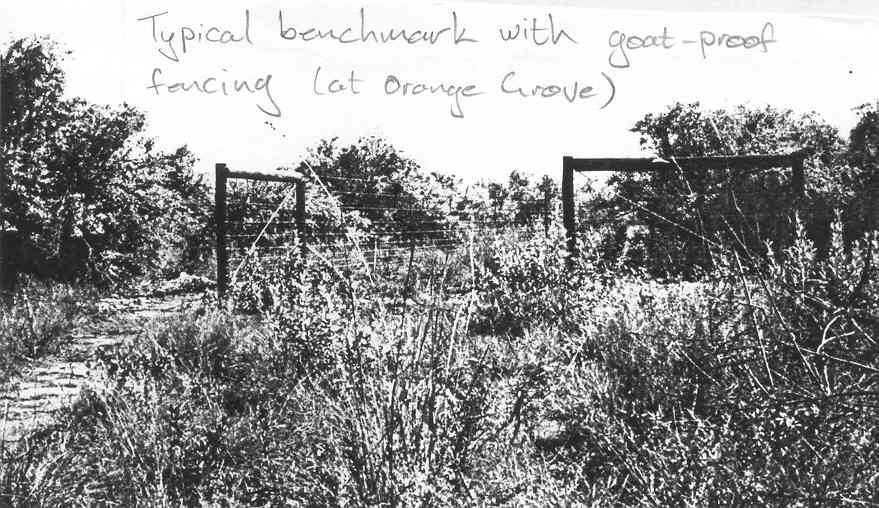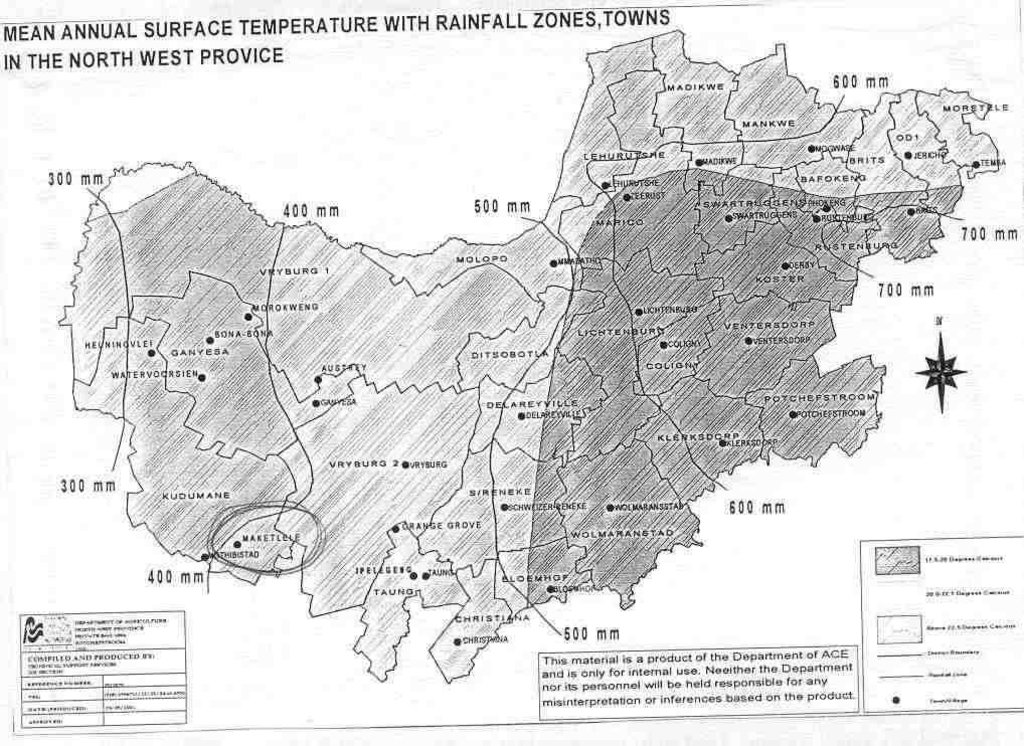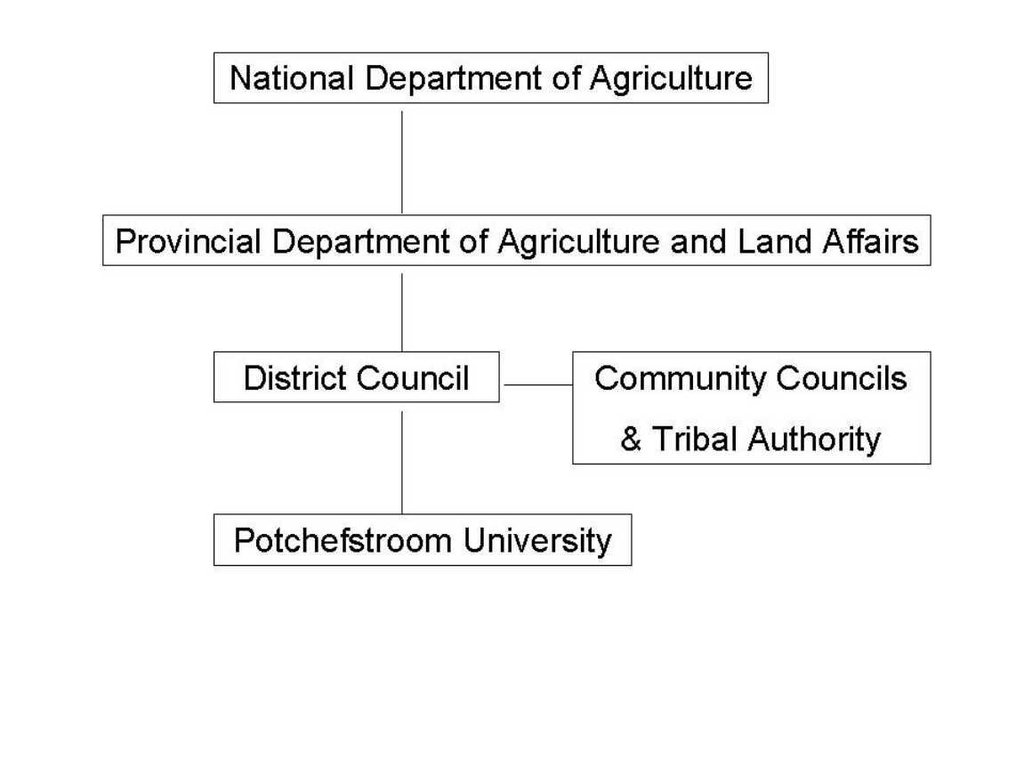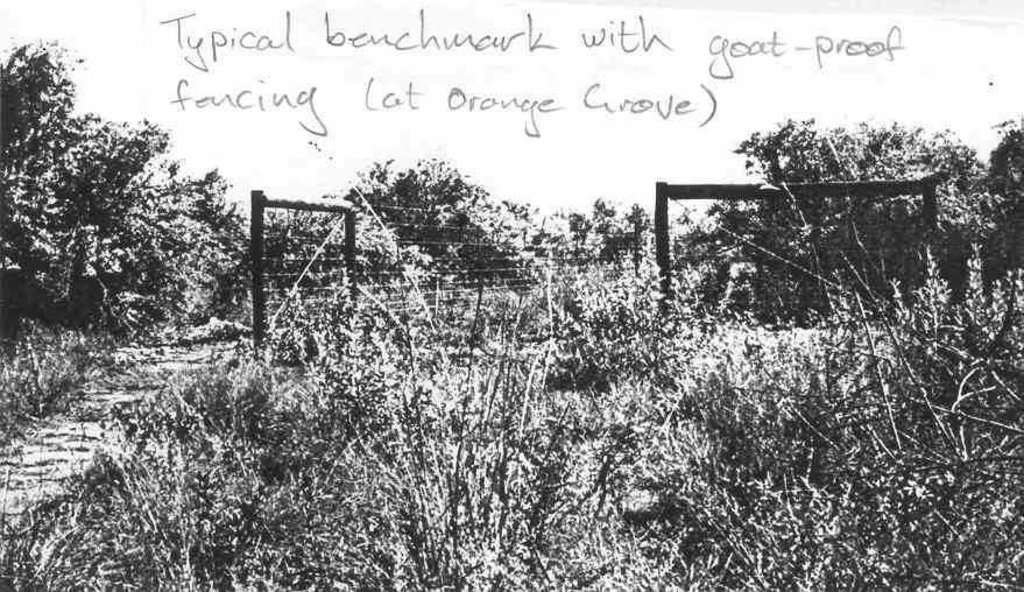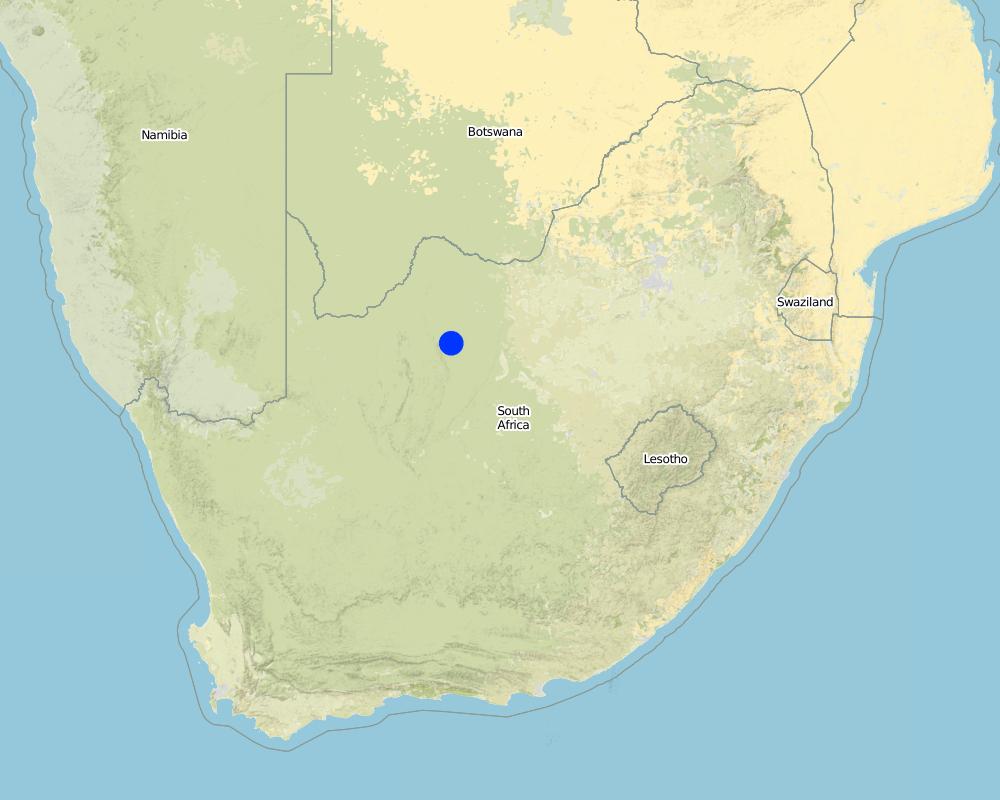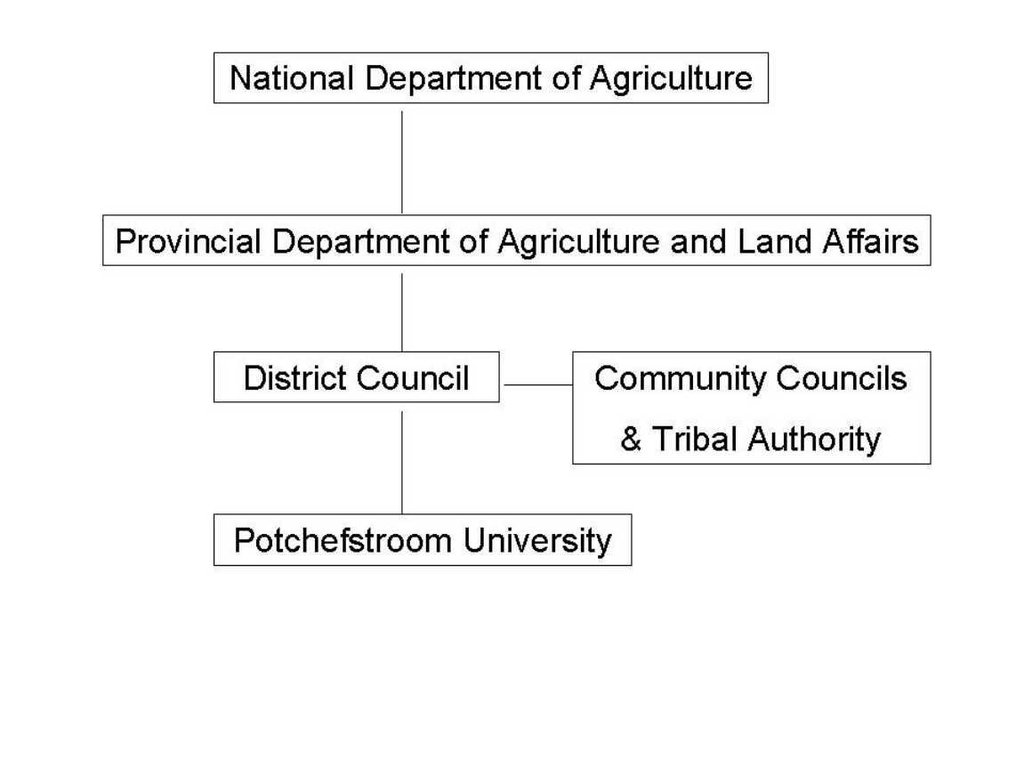Communal stakeholders [Afrique du Sud]
- Création :
- Mise à jour :
- Compilateur : Anja Jansen van Vuuren
- Rédacteur : –
- Examinateur : Fabian Ottiger
approaches_2339 - Afrique du Sud
Voir les sections
Développer tout Réduire tout1. Informations générales
1.2 Coordonnées des personnes-ressources et des institutions impliquées dans l'évaluation et la documentation de l'Approche
Spécialiste GDT:
Nom du ou des institutions qui ont facilité la documentation/ l'évaluation de l'Approche (si pertinent)
Potchefstroom Universiteit vir CHO (Potchefstroom Universiteit vir CHO) - Afrique du Sud1.3 Conditions relatives à l'utilisation par WOCAT des données documentées
Le compilateur et la(les) personne(s) ressource(s) acceptent les conditions relatives à l'utilisation par WOCAT des données documentées:
Oui
1.4 Références au(x) questionnaire(s) sur les Technologies de GDT
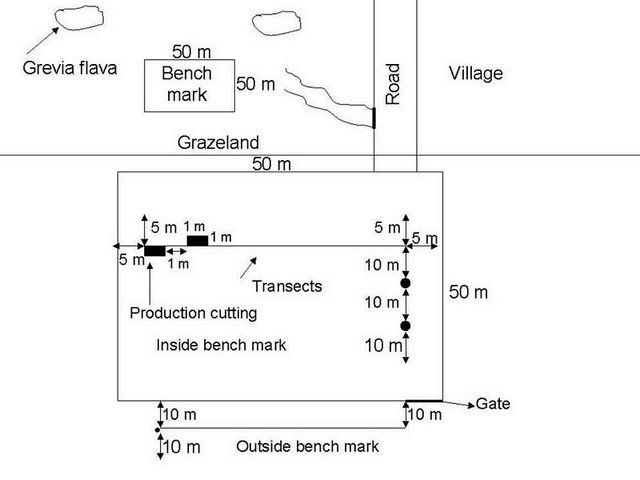
Communal grazing management [Afrique du Sud]
Rangeland management of communal grazing land, to improve grazing capacity by applying rotation.
- Compilateur : Anja Jansen van Vuuren
2. Description de l'Approche de GDT
2.1 Courte description de l'Approche
Government funded project aimed at rangeland management to enhance natural recourse management. The community being the key stake holders.
2.2 Description détaillée de l'Approche
Description détaillée de l'Approche:
Aims / objectives: The community was approached to show where the benchmarks should be erected. The whole community was informed about the project and how they would benefit from it. Benchmarks were erected by the community, thus creating jobs. Initial surveys were conducted so that later comparison in production and species composition could be made after further surveys. The rotational approach was introduced in a communal system.
2.3 Photos de l'approche
2.5 Pays/ région/ lieux où l'Approche a été appliquée
Pays:
Afrique du Sud
Région/ Etat/ Province:
North West Province
Map
×2.6 Dates de début et de fin de l'Approche
Indiquez l'année de démarrage:
1998
2.7 Type d'Approche
- fondé sur un projet/ programme
2.8 Principaux objectifs de l'Approche
The Approach focused mainly on SLM with other activities (Cattle improvement. Veld management strategies have been learned. Survey skills learned.)
On-site technology application. Seeing is believing. Community participation. Empowerment of the community to better their own situation. Job creation, community-based natural resource management. Promoting partnerships between public, community and private sectors.
The SLM Approach addressed the following problems: Degraded rangelands, thus insufficient grazing for the cattle.
2.9 Conditions favorisant ou entravant la mise en œuvre de la(des) Technologie(s) appliquée(s) sous l'Approche
disponibilité/ accès aux ressources et services financiers
- entrave
Availability of government funds.
Treatment through the SLM Approach:
cadre institutionnel
- entrave
Communication between parties.
Treatment through the SLM Approach: More structured and organised meetings.
cadre juridique (régime foncier, droits d'utilisation des terres et de l'eau)
- favorise
The existing land ownership, land use rights / water rights greatly helped the approach implementation: The chiefs favoured the approach.
connaissances sur la GDT, accès aux supports techniques
- entrave
Lack of community participation during surveys.
Treatment through the SLM Approach: Make a big issue about environmental awareness.
3. Participation et rôles des parties prenantes impliquées dans l'Approche
3.1 Parties prenantes impliquées dans l'Approche et rôles
- exploitants locaux des terres / communautés locales
Participation
Specific ethnic groups: Twana people but only men. The community was asked where the benchmarks should be situated.
- gouvernement national (planificateurs, décideurs)
Funding
- organisation internationale
Basic framework
Si plusieurs parties prenantes sont impliquées, indiquez l'organisme chef de file ou l'institution responsable:
The approach - international specialists. The South African approach and application - national specialists. Specification of sites - land users.
3.2 Participation des exploitants locaux des terres/ communautés locales aux différentes phases de l'Approche
| Participation des exploitants locaux des terres/ communautés locales | Spécifiez qui était impliqué et décrivez les activités | |
|---|---|---|
| initiation/ motivation | passive | workshops/seminars, public meetings; Training for surveys was provided. |
| planification | passive | orkshops/seminars; Training |
| mise en œuvre | interactive | responsibility for minor steps; Should apply the rotation. |
| suivi/ évaluation | interactive | measurements/observations; Help with monitoring. |
| Research | interactive | on-farm; Benchmarks was erected. |
3.3 Diagramme/ organigramme (si disponible)
3.4 Prises de décision pour la sélection de la Technologie/ des Technologies
Indiquez qui a décidé de la sélection de la Technologie/ des Technologies à mettre en œuvre:
- principalement les spécialistes de la GDT, après consultation des exploitants des terres
Expliquez:
land user driven (bottom-up).
Decisions on the method of implementing the SLM Technology were made by mainly by SLM specialists with consultation of land users. consultative. The land user did not have the knowledge.
4. Soutien technique, renforcement des capacités et gestion des connaissances
4.1 Renforcement des capacités/ formation
Une formation a-t-elle été dispensée aux exploitants des terres/ autres parties prenantes?
Oui
Spécifiez qui a été formé:
- exploitants des terres
- SWC specialists, extensionists/trainers
Formats de la formation:
- entre agriculteurs (d'exploitants à exploitants)
- zones de démonstration
- réunions publiques
Thèmes abordés:
Ecological principles, NRM principals.
4.2 Service de conseils
Les exploitants des terres ont-ils accès à un service de conseils?
Oui
Décrivez/ commentez:
Name of method used for advisory service: Demonstration; Key elements: Benchmark sites, Learning by doing; 1) Mainly: government's existing extension system, Partly: non-governmental agency. Extension staff: mainly government employees 3) Target groups for extension: land users, technicians/SWC specialists; Activities: Public demonstrations
Advisory service is inadequate to ensure the continuation of land conservation activities; Monitoring does not persist if some one is not doing it with them.
4.3 Renforcement des institutions (développement organisationnel)
Des institutions ont elles été mises en place ou renforcées par le biais de l'Approche?
- oui, un peu
Spécifiez à quel(s) niveau(x), ces institutions ont été renforcées ou mises en place:
- local
Précisez le type de soutien:
- renforcement des capacités/ formation
4.4 Suivi et évaluation
Le suivi et l'évaluation font ils partie de l'Approche? :
Oui
Commentaires:
bio-physical aspects were regular monitored through measurements
socio-cultural aspects were ad hoc monitored through observations
economic / production aspects were ad hoc monitored through observations
area treated aspects were regular monitored through measurements
no. of land users involved aspects were regular monitored through measurements
management of Approach aspects were regular monitored through measurements
There were no changes in the Approach as a result of monitoring and evaluation
4.5 Recherche
La recherche a-t-elle fait partie intégrante de l’Approche?
Oui
Spécifiez les thèmes:
- écologie
Donnez plus de détails et indiquez qui a mené ces recherches:
Vegetation, NRM, production monitoring, soil composition, on-site application.
Research was carried out on-farm
5. Financement et soutien matériel externe
5.1 Budget annuel de la composante GDT de l'Approche
Si le budget annuel précis n'est pas connu, indiquez une fourchette:
- 10 000-100 000
Commentez (par ex. principales sources de financement/ principaux bailleurs de fonds):
Approach costs were met by the following donors: government (national - Department of Agriculture): 80.0%; national non-government (University): 20.0%
5.2 Soutiens financiers/ matériels fournis aux exploitants des terres
Les exploitants des terres ont-ils reçu un soutien financier/ matériel pour la mise en œuvre de la Technologie/ des Technologies?
Oui
5.3 Subventions pour des intrants spécifiques (incluant la main d'œuvre)
Si la main d'œuvre fournie par les exploitants des terres était un intrant substantiel, elle était:
- payée en espèces
Commentaires:
Job creation incentive.
5.4 Crédits
Des crédits ont-ils été alloués à travers l'Approche pour les activités de GDT?
Non
6. Analyses d'impact et conclusions
6.1 Impacts de l'Approche
Est-ce que l'Approche a aidé les exploitants des terres à mettre en œuvre et entretenir les Technologies de GDT?
- Non
- Oui, un peu
- Oui, modérément
- Oui, beaucoup
Rotational grazing system was adopted.
Did other land users / projects adopt the Approach?
- Non
- Oui, un peu
- Oui, modérément
- Oui, beaucoup
Other regions in North West Province are following the example.
6.3 Durabilité des activités de l'Approche
Les exploitants des terres peuvent-ils poursuivre ce qui a été mis en œuvre par le biais de l'Approche (sans soutien extérieur)?
- oui
Si oui, décrivez de quelle manière:
Extension officers learned from the specialists.
6.4 Points forts/ avantages de l'Approche
| Points forts/ avantages/ possibilités du point de vue de l'exploitant des terres |
|---|
| Better grazing. (How to sustain/ enhance this strength: Keep to the rules of rotational grazing. Keep cattle out of resting velds.) |
| Specialists help. (How to sustain/ enhance this strength: The specialists made surveys easy. Assist in erecting.) |
| Points forts/ avantages/ possibilités du point de vue du compilateur ou d'une autre personne ressource clé |
|---|
| The committed ADC manager. (How to sustain/ enhance this strength: Keep him motivated through communication.) |
| LandCare. (How to sustain/ enhance this strength: he buzz words were introduced and community was made aware of the environment.) |
| Interaction between different cultures. (How to sustain/ enhance this strength: Specialists and communities were introduced to one another.) |
6.5 Faiblesses/ inconvénients de l'Approche et moyens de les surmonter
| Faiblesses/ inconvénients/ risques du point de vue de l’exploitant des terres | Comment peuvent-ils être surmontés? |
|---|---|
| Specialists are very remote. | Not always reachable. |
| Reduction of cattle numbers. | Resistant to reducing wealth. |
| Faiblesses/ inconvénients/ risques du point de vue du compilateur ou d'une autre personne ressource clé | Comment peuvent-ils être surmontés? |
|---|---|
| Linguistic abilities not sufficient. | Learn to speak Tswana. |
| Times delays. | The sites are a bit remote and the people only drive during working hours. |
| NRM application should be sustainable. | Not only based on incentives, but the benefits should be realised. |
7. Références et liens
7.1 Méthodes/ sources d'information
- visites de terrain, enquêtes sur le terrain
- interviews/entretiens avec les exploitants des terres
Liens et modules
Développer tout Réduire toutLiens

Communal grazing management [Afrique du Sud]
Rangeland management of communal grazing land, to improve grazing capacity by applying rotation.
- Compilateur : Anja Jansen van Vuuren
Modules
Aucun module trouvé


